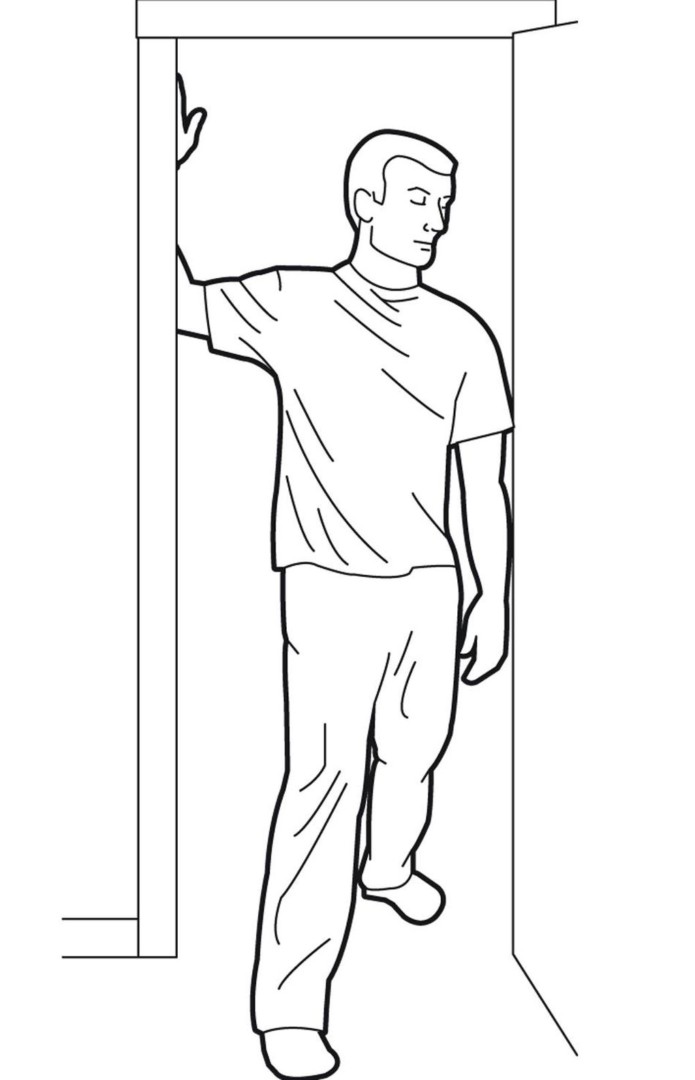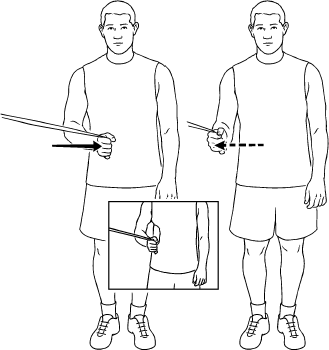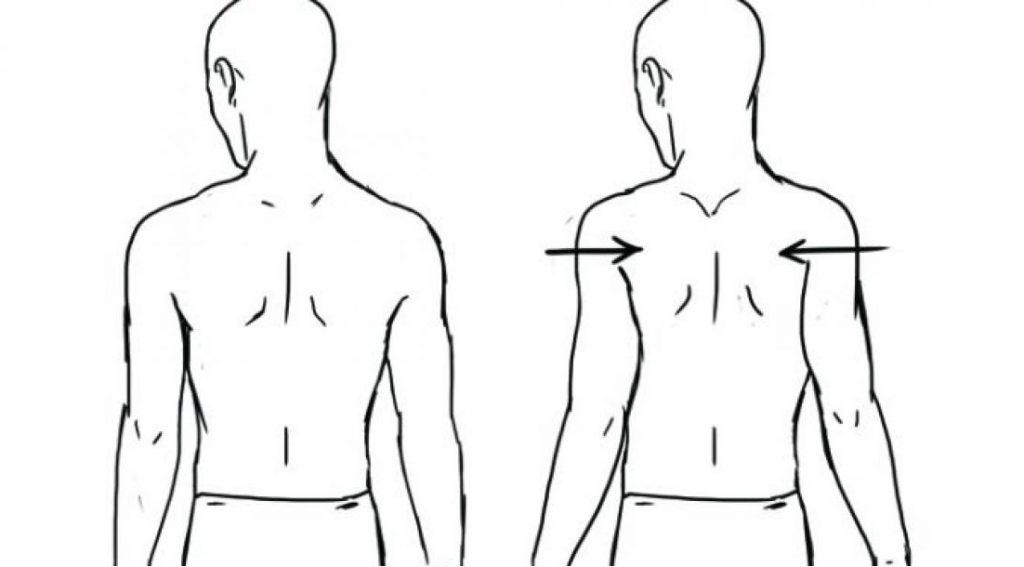Shoulder impingement can be a real pain, literally. But fortunately in this blog we are gonna talk about shoulder impingement exercises. Whether you’re reaching for the top shelf or swinging a tennis racket, that nagging discomfort in your shoulder can quickly become a nuisance. But fear not! In this comprehensive guide, we’re diving deep into shoulder impingement to help you understand what it is, why it happens, and most importantly, how to prevent it.
From the basics of shoulder anatomy to the importance of proper posture techniques, we’ll cover everything you need to know to keep your shoulders happy and healthy. But we won’t stop there. We’ll also walk you through a series of shoulder impingement exercises designed to alleviate pain, improve mobility, and strengthen those shoulder muscles.
Table of Contents
Understanding Shoulder Impingement
What is Shoulder Impingement?
Shoulder impingement is a common condition that occurs when the rotator cuff tendons and the bursa (a fluid-filled sac that cushions the shoulder joint) becomes compressed during shoulder movements. Imagine trying to squeeze a large pillow into a small pillowcase; it’s just not a comfortable fit. This compression leads to pain, inflammation, and reduced mobility. It’s often seen in athletes and individuals who perform repetitive overhead activities, but don’t worry, you don’t need to be a pro athlete to feel the pinch.
Causes of Shoulder Impingement
The causes of shoulder impingement can be as varied as the colors in a rainbow, but a few common culprits are usually to blame. Poor posture, especially if you’re hunched over a computer like a question mark, can cause shoulder impingement. Overuse from repetitive motions, like painting a ceiling or swimming laps, can also lead to this condition. And let’s not forget the anatomical factors—some people are just born with a smaller subacromial space, making them more prone to impingement. If only we could choose our anatomy like we choose our outfits!
Symptoms of Shoulder Impingement
Recognizing the symptoms of shoulder impingement is key to addressing the issue early on. The hallmark symptom is pain, particularly when lifting the arm overhead. This pain might feel like a dull ache or a sharp pinch, making you question if you really needed that jar on the top shelf. Other symptoms include shoulder weakness, difficulty reaching behind your back, and a general feeling of stiffness. If you notice these symptoms, it might be time to incorporate some shoulder impingement exercises into your routine to ease the discomfort and regain your range of motion.
The Importance of Exercises for Shoulder Impingement
Benefits of Exercise in Recovery
Engaging in shoulder impingement exercises is crucial for recovery. These exercises help reduce pain, improve mobility, and strengthen the muscles around the shoulder. Think of it as giving your shoulder a VIP ticket to a spa day—complete with stretching, strengthening, and a little TLC. By regularly performing these shoulder impingement exercises, you can enhance blood flow to the affected area, promoting healing and reducing inflammation. Plus, stronger shoulder muscles mean better support for the joint, reducing the risk of future impingement. Who knew some shoulder impingement exercises could be such a game-changer?
Risks of Not Exercising
Avoiding shoulder impingement exercises is like ignoring a slow leak in your roof—things might look fine now, but it’s only a matter of time before problems arise. Without proper exercise, the pain and inflammation can worsen, leading to chronic shoulder issues. You might experience increased stiffness and a significant reduction in your range of motion, making daily tasks like brushing your hair or reaching for that coffee cup feel like Herculean feats. Additionally, the muscles around the shoulder can weaken over time, leaving your shoulder more susceptible to injuries. So, while it might be tempting to skip those shoulder impingement exercises, your shoulder will thank you for sticking with them.
Best Shoulder Impingement Exercises
Stretching Exercises
Stretching exercises are essential for alleviating the tightness and discomfort associated with shoulder impingement. These shoulder impingement exercises help to lengthen the muscles and tendons around the shoulder, improving flexibility and reducing pain. Here are a couple of effective stretches to include in your routine, For a more detailed explanation of these shoulder impingement exercises, please scroll down a bit further.
- Cross-Body Shoulder Stretch: Stand tall and bring your injured arm across your body, using your opposite hand to gently pull it closer to your chest. Hold for 20-30 seconds and repeat a few times. This stretch targets the rear shoulder muscles, making it one of the best shoulder impingement exercises.

- Doorway Stretch: Stand in a doorway with your arms at a 90-degree angle on either side of the frame. Step forward with one foot, keeping your back straight, until you feel a stretch in the front of your shoulders and chest. Hold for 20-30 seconds, then switch legs. This stretch opens up the chest and shoulders, improving posture and flexibility.

Strengthening Exercises
Strengthening shoulder impingement exercises are vital for stabilizing the shoulder joint and preventing future injuries. These exercises focus on building the muscles around the shoulder, particularly the rotator cuff and scapular muscles. Here are a few key exercises:
- External Rotation with Resistance Band: Attach a resistance band to a stable object and hold the other end with the hand of your injured arm. Keep your elbow at a 90-degree angle and rotate your forearm outward, away from your body. Perform 2-3 sets of 10-15 repetitions. This exercise strengthens the rotator cuff, enhancing shoulder stability.

- Scapular Retraction: Sit or stand with your arms at your sides. Squeeze your shoulder blades together, as if trying to hold a pencil between them. Hold for 5-10 seconds, then release. Repeat for 2-3 sets of 10-15 repetitions. This exercise targets the muscles between the shoulder blades, promoting better posture and support making it one of the greates shoulder impingement exercises.

Range of Motion Exercises
Range of motion shoulder impingement exercises are crucial for maintaining and improving mobility. These exercises help to ensure that the shoulder can move freely in all directions without pain. Incorporate the following exercises into your routine:
- Pendulum Swings: Lean forward, supporting yourself with one hand on a table or chair. Let your other arm hang down and gently swing it in small circles. Gradually increase the size of the circles. Perform for 1-2 minutes in each direction. This exercise uses gravity to help gently mobilize the shoulder joint.
- Wall Climb: Stand facing a wall and use your fingers to “walk” your hand up the wall as high as you comfortably can. Hold for a few seconds at the top, then slowly walk your hand back down. Repeat 10-15 times. This exercise improves shoulder elevation and helps regain normal range of motion.

By regularly incorporating these shoulder impingement exercises into your routine, you can effectively manage pain, improve strength, and enhance mobility. Remember, consistency is key—your shoulder will appreciate the dedicated care! For a more detailed explanation of each of these shoulder impingement exercises please read the heading below.
Step-by-Step Guide to Performing Shoulder Impingement Exercises
Warm-Up Routine
Warming up is a crucial first step before diving into shoulder impingement exercises. A good warm-up increases blood flow to the muscles, making them more pliable and reducing the risk of injury. Here’s a simple warm-up routine to get you started:
- Arm Circles: Stand with your feet shoulder-width apart. Extend your arms out to the sides and make small circles forward for 30 seconds, then reverse the direction for another 30 seconds. Gradually increase the size of the circles.
- Shoulder Shrugs: Stand with your arms at your sides. Lift your shoulders up towards your ears, hold for a moment, then release. Repeat for 1-2 minutes. This helps to activate and warm up the shoulder muscles.
- Thoracic Spine Rotation: Sit or stand with your hands clasped in front of you. Rotate your torso to the left, then to the right, keeping your hips stable. Repeat for 1-2 minutes to loosen up the upper back and shoulders.
Detailed Exercise Instructions
Here are some key shoulder impingement exercises, broken down step-by-step to ensure you perform them correctly and safely:
Stretching Exercises
- Cross-Body Shoulder Stretch:
- Stand tall with your feet shoulder-width apart.
- Bring your injured arm across your body at shoulder height.
- Use your opposite hand to gently pull your arm closer to your chest.
- Hold for 20-30 seconds, then release.
- Repeat 2-3 times.
- Doorway Stretch:
- Stand in a doorway with your arms bent at 90 degrees, hands placed on the doorframe.
- Step forward with one foot, keeping your back straight.
- Lean forward until you feel a stretch in your chest and shoulders.
- Hold for 20-30 seconds, then switch legs.
- Repeat 2-3 times.
Strengthening Exercises
- External Rotation with Resistance Band:
- Attach a resistance band to a stable object at elbow height.
- Stand with your side to the band, holding the band with your outside hand.
- Keep your elbow at a 90-degree angle, tucked into your side.
- Slowly rotate your forearm outward, away from your body.
- Return to the starting position.
- Perform 2-3 sets of 10-15 repetitions on each side.
- Scapular Retraction:
- Sit or stand with your arms at your sides.
- Squeeze your shoulder blades together, as if trying to hold a pencil between them.
- Hold for 5-10 seconds, then release.
- Repeat for 2-3 sets of 10-15 repetitions.
Range of Motion Exercises
- Pendulum Swings:
- Lean forward, supporting yourself with one hand on a table or chair.
- Let your other arm hang down loosely.
- Gently swing your arm in small circles, gradually increasing the size.
- Perform for 1-2 minutes in each direction.
- Wall Climb:
- Stand facing a wall.
- Place your fingers on the wall at waist height.
- Use your fingers to “walk” your hand up the wall as high as you comfortably can.
- Hold for a few seconds at the top, then slowly walk your hand back down.
- Repeat 10-15 times.
Cool Down and Recovery Tips
Cooling down after your shoulder impingement exercises is just as important as warming up. It helps to gradually lower your heart rate and prevent muscle stiffness. Here are some cool-down and recovery tips:
- Gentle Stretching: Perform light stretches, similar to those in your warm-up, to help relax the muscles.
- Ice Therapy: Apply ice to the shoulder for 15-20 minutes if you experience any pain or swelling after your shoulder impingement exercises. This can help reduce inflammation and speed up recovery.
- Hydration and Nutrition: Drink plenty of water and eat a balanced diet rich in protein and anti-inflammatory foods to support muscle repair and overall recovery.
- Rest: Ensure you get adequate rest between shoulder impingement exercises to allow your muscles and tendons to heal properly. Listening to your body is key—if you feel excessive pain, take a break and consult a healthcare professional if necessary.
By following this step-by-step guide, you can perform shoulder impingement exercises safely and effectively, helping to alleviate pain and improve shoulder function.

Tips for Preventing Shoulder Impingement
Proper Posture Techniques
Maintaining good posture is essential for preventing shoulder impingement and other related injuries. Here are some posture tips to keep in mind:
- Sit and Stand Tall: Imagine a string pulling you upward from the top of your head. Keep your shoulders back and down, and your chin parallel to the ground.
- Align Your Ears, Shoulders, and Hips: When sitting or standing, try to keep your ears directly above your shoulders, and your shoulders aligned with your hips. This helps distribute weight evenly and reduces strain on the shoulders.
- Take Breaks: If you spend long periods sitting at a desk, make sure to take regular breaks to stand up, stretch, and adjust your posture. Your shoulders will thank you for the relief!
Ergonomic Adjustments
Making ergonomic adjustments to your work environment and daily activities can significantly reduce the risk of shoulder impingement. Consider the following adjustments:
- Adjust Your Workspace: Ensure that your desk, chair, and computer setup are ergonomically designed to promote proper posture. Your monitor should be at eye level, and your keyboard and mouse should be positioned so that your arms are at a comfortable angle.
- Use Proper Lifting Techniques: When lifting heavy objects, bend your knees and keep your back straight. Lift with your legs rather than your back to avoid putting unnecessary strain on your shoulders.
- Choose the Right Equipment: If you participate in sports or activities that involve repetitive shoulder movements, make sure you use equipment that fits properly and provides adequate support. This can help reduce the risk of overuse injuries.
Lifestyle and Activity Modifications
Making some simple lifestyle and activity modifications can go a long way in preventing shoulder impingement. Here are a few tips to consider:
- Stay Active: Engage in regular exercise to strengthen the muscles around your shoulders and improve flexibility. Focus on exercises that promote good posture and proper shoulder mechanics.
- Avoid Overuse: Be mindful of repetitive shoulder movements, especially those that involve overhead reaching or lifting. If possible, vary your activities to prevent overuse of the shoulder muscles.
- Listen to Your Body: Pay attention to any warning signs of shoulder discomfort or pain, and don’t ignore them. If you experience persistent shoulder pain or limited range of motion, seek guidance from a healthcare professional to address the issue before it worsens.
By incorporating these tips into your daily routine, you can help prevent shoulder impingement and keep your shoulders happy and healthy for years to come. Remember, a little prevention goes a long way!
Related: The best calisthenic shoulder exercises for ultimate progress

